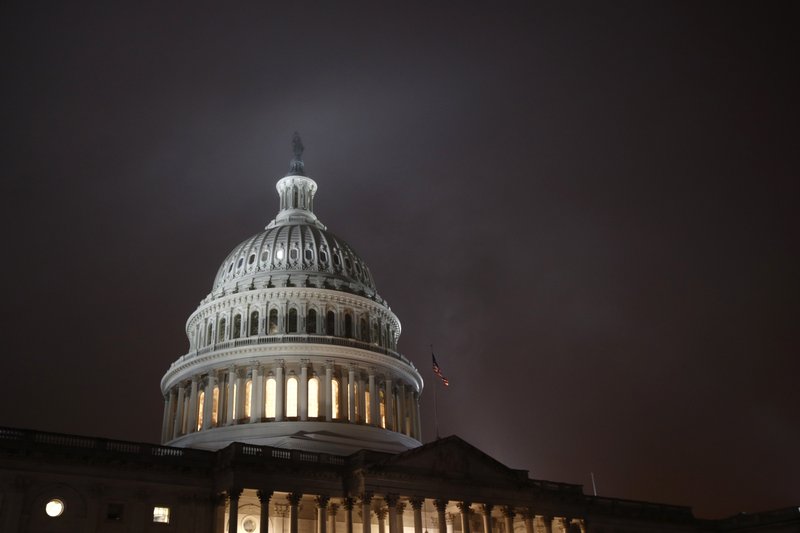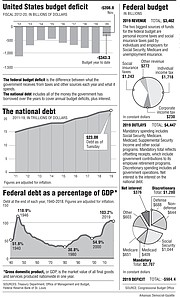WASHINGTON -- The U.S. budget deficit rose by nearly 2% last month to $208.8 billion, another step in the federal government's journey toward $1 trillion-a-year budget shortfalls.
The U.S. Treasury Department said the increase partially reflected an increase in spending tied to the timing of some federal payments. The department reported Wednesday that the federal government took in $225 billion in tax and other revenue but spent a record $434 billion in November.
Spending increased 5.6%, with outlays rising for agriculture, defense, Social Security and Medicaid. Receipts jumped 9.3% on increases in payroll taxes and individual income payments.
November is the second month of the government's fiscal 2020 budget year, which began Oct. 1.
The non-partisan Congressional Budget Office estimated earlier this week that the November budget gap would have been about $50 billion smaller if not for a calendar quirk. Similar to last fiscal year, some December payments were moved up to November because Dec. 1 fell on a Sunday.
In the 2019 budget year, which ended Sept. 30, the government ran up a deficit of $984 billion, the most in seven years.
The Congressional Budget Office is forecasting that the deficit for fiscal 2020 will hit $1 trillion and will stay above $1 trillion annually over the next decade. The country last ran $1 trillion annual deficits from 2009 through 2012 during after the 2008 financial crisis.
While the spending gap narrowed as the economy picked up momentum, the fiscal imbalance started to grow again after President Donald Trump and Congress pushed through a large tax cut in 2017 while ramping up spending. Adding to budget pressures: The baby boom generation is retiring and beginning to collect Social Security benefits and enroll in Medicare.
In the first two months of the current budget year, the government is running a deficit of $343 billion, up 12% from the same period a year earlier.
Accumulating deficits add to the overall federal debt, which totaled more than $23.1 trillion as of Tuesday. That figure includes more than $6 trillion the government owes itself, including about $2.9 trillion borrowed from the Social Security Trust Fund, according to Treasury Department reports.
The federal budget under Trump has some deficit hawks concerned about its sustainability, arguing that it risks investors losing confidence in the U.S. to repay its debts over the long term.
At the same time, Treasury yields remain historically low despite the rising budget deficit, which includes the impact of Trump's tax cuts package that the Congressional Budget Office estimates will cost $1.9 trillion over the next decade.
Information for this story was contributed by Paul Wiseman of the Associated Press and Katia Dmitrieva of Bloomberg News.
A Section on 12/12/2019


